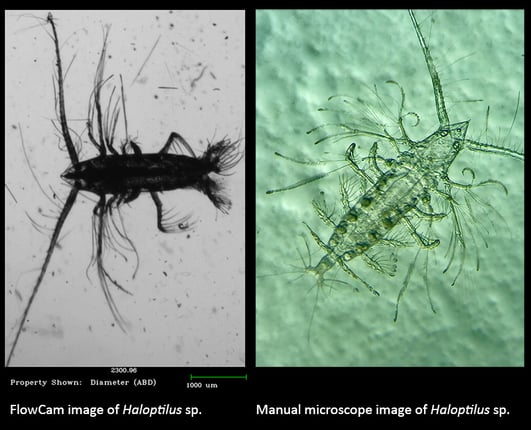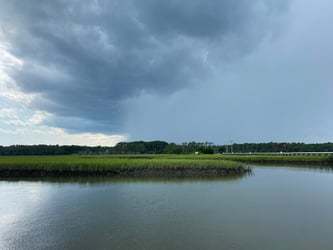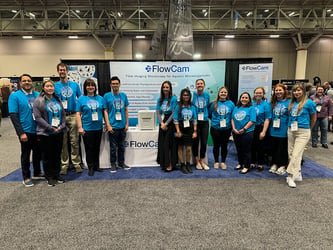A Conversation with Kathryn Cook, PhD
Zooplankton have fascinated scientists in the field of marine ecology for many years. Changes in the structure of marine zooplankton communities are indicators of environmental and anthropogenic impacts on our water systems; therefore, studying these small aquatic microorganisms are important. We recently spoke with zooplankton biologist and pelagic biogeochemist Dr. Kathryn Cook to learn how FlowCam Macro has advanced her research. Here’s part of our conversation:
How did you first learn about FlowCam?
I first saw a demonstration of FlowCam Macro at the 2016 Zooplankton Production Symposium in Bergen, Norway. Having spent hours at a microscope analyzing plankton samples, I was amazed at how quickly a sample could be imaged through FlowCam Macro and by the quality of the images! I was delighted to discover that the National Oceanography Centre (NOC) in Southampton had just bought one when I went to work there in 2017.
What method were you using before?
 Before FlowCam, I used a microscope to examine zooplankton and phytoplankton, which would take at least half a day per sample, much longer if I needed to measure the organisms using an eye-piece graticule, and even then, I could only measure the length and width of organisms.
Before FlowCam, I used a microscope to examine zooplankton and phytoplankton, which would take at least half a day per sample, much longer if I needed to measure the organisms using an eye-piece graticule, and even then, I could only measure the length and width of organisms.
FlowCam greatly reduced analysis time, from days to minutes, and provided me with highly resolved images and morphological data that helped me differentiate between living and dead cells and perform taxonomic classification.
How has FlowCam contributed to your work and research?
Much of my research focuses on the size and quantity of organisms within rough taxonomic groups rather than on identifying which species are present. FlowCam provides a variety of size measurements for each particle, allowing us to construct size spectra of plankton communities and convert from biovolume to biomass for each individual particle instead of applying a conversion factor based on an average particle.
We use FlowCam Macro to analyze preserved zooplankton samples quickly and obtain size and rough taxonomic information. I use a standard, size-based classification template to sort my sample into rough-size categories, effectively sorting organisms into approximate taxonomic groups. Then I manually sort the ones that need to be reclassified.
FlowCam provides us with a digital record of our samples, which not only reduces the physical space we need in our lab to store preserved zooplankton samples but also allows us to perform sample classification analyses at our leisure in the comfort of our office (or living room!). Plus, it is far easier to train someone to run a sample through FlowCam than to train them to identify plankton samples using a microscope.
FlowCam’s streamlined workflow has supported my ability to accommodate more undergraduate and master’s projects in my laboratory. Students can conduct analyses independently, and I can easily check their work with less subjectivity than comes with manual microscopy; FlowCam gives increased confidence in the data.













